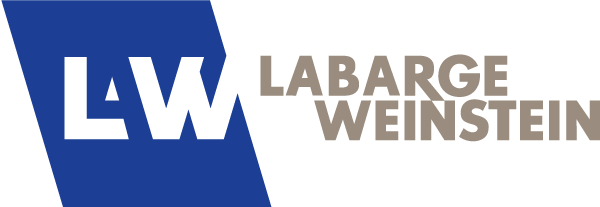Going Through the “SRED”er: An Overview of the Scientific Research and Experimental Development Tax Incentive Program
The Canadian federal government offers a tax incentive to Canadian businesses conducting scientific research and experimental development (“SR&ED”) in the form of tax credits based on qualifying expenditures related to that research and development. This incentive can be extremely important to many early-stage companies, particularly in the knowledge-based and technology sectors, both in terms of receiving the credit directly as a refund (where the business qualifies for a refundable credit) and in terms of borrowing additional working capital against the strength of a SR&ED claim prior to that claim being processed.
Key points to remember and to seek advice on (from your lawyers and your accountants) in relation to a potential SR&ED claim:
- A company must be a “Canadian-controlled private corporation” (also known as a “CCPC”) in order to be eligible for the refundable SR&ED tax credit described below. Generally, a company qualifies as a CCPC if:
- it is resident in Canada;
- none of its shares are listed on a stock exchange;
- it is not controlled, directly or indirectly, by non-residents of Canada and/or by public corporations; and
- all of the shares held by non-residents of Canada or public corporations would not represent a controlling interest even if they were owned by a single shareholder.
- It is important to ensure that a potential SR&ED claimant’s capital and board structures are reviewed if it expects to file as a CCPC. CCPCs can receive a refundable tax credit equal to up 35% of qualifying current expenditures (and qualifying capital expenditures before 2014) to a maximum of $3,000,000. After that threshold, there is a scaled back non-refundable tax credit available. On the other hand, non-CCPC corporations conducting R&D in Canada can access only a 20% SR&ED tax credit (reduced to 15% after 2013) and it is merely available to offset tax payable and, unlike CCPC SR&EDs, is not refundable.
- Expenses making up a SR&ED claim must generally arise from work actually performed in Canada.
- In order to qualify, the expenses must arise in connection with “scientific research and experimental development” as defined in the Income Tax Act. The definition is lengthy and involved and covers both how and why the work is being done. Any company intending to make a SR&ED claim will want to ensure that the expenses giving rise to the claim fit the definition. The Canada Revenue Agency (“CRA”) provides an online self-assessment tool to help potential claimants determine whether their R&D projects are SR&ED eligible.
- On a high level, expenses incurred in the following are generally SR&ED eligible:
- basic research undertaken for the advancement of scientific knowledge without contemplating a specific practical application;
- applied research undertaken for the advancement of scientific knowledge with a practical application in mind; and
- experimental development undertaken to achieve technological advancement in order to create new (or improve existing) materials, devices, products or processes.
Expenses incurred for engineering, design, operations research, mathematical analysis, computer programming, data collection, testing or psychological research that is undertaken directly in support of the items listed above will also generally be SR&ED eligible.
- Expenses related to the following will not be SR&ED eligible:
- market research or sales promotion;
- quality control or routine testing of materials, devices, products or processes;
- research in the social sciences or the humanities;
- prospecting, exploring or drilling for, or producing, minerals, petroleum or natural gas;
- the commercial production of a new or improved material, device or product or the commercial use of a new or improved process;
- style changes; or
- routine data collection.
Companies that have SR&ED eligible expenses can often borrow against their anticipated SR&ED refund. There are a number of lenders operating in the SR&ED loan space, though the Chartered Banks tend to stay away. A SR&ED lender will typically ask for a general security interest and the terms of their loan will have some protections aimed at ensuring that the company is not able to receive the SR&ED refund directly without applying it to the loan. CRA will not recognize the assignment and, accordingly, it is not possible to redirect the payment from CRA directly to the SR&ED lender. The protections that we tend to see include:
- changing the company’s address with CRA to the address of its lawyers and instructing the lawyers to be hold the refund cheque pending receipt of a joint instruction from the SR&ED lender and the company; or
- requiring the company to open a new bank account to be used solely for receipt of the direct deposit from CRA and requiring two signatories in order for any funds to flow out of that account – one signatory being named by the SR&ED lender and the other by the company.
If the company has already granted a first priority security interest to its primary banker, a SR&ED lender will generally require a subordination agreement or priority agreement between it and the primary bank. The large banks are generally receptive to this – at least to the extent required to provide the SR&ED lender with priority over the SR&ED refund and in particular in situations where the primary lender is not itself prepared to finance the SR&ED receivable.
As a closing word of caution, the foregoing is intended as a high-level overview. Specific legal advice should be sought prior to incurring expenses in respect of which a SR&ED claim is intended to be made in order to ensure that the entity incurring the expenses is properly structured. That advice should be reconfirmed prior to making any changes within that entity that might have an impact on its status as a CCPC. Further, it is recommended that advice from an accountant (or other consultant with expertise in filing SR&ED claims) should be sought prior to making a SR&ED claim.
Author: Dan Scott



